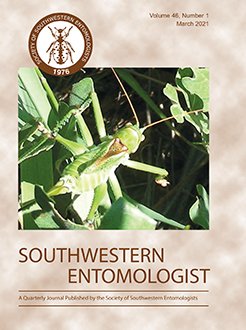The main objective of the study was to identify chemical compounds of extract of acetone of shell + almond (EACA) and nut of almond (EAA) of Jatrofa curcas and evaluate bioactivity against Copitarsia decolora in laboratory and greenhouse conditions. In ingestion experiments, extracts at 250, 500, 1,000, 1,500, and 2,000 ppm were mixed into artificial diet. Checks were artificial diet mixed with a botanical insecticide Margosom® 0.3% EC (active ingredient [AI] 250 ppm, azadirachtin), and diet plus only water. EAA at 250 and 1,000 ppm inhibited larval weight and prolonged larval development of C. decolora. EAA at 500 ppm and EACA at 1,500 ppm caused most deformation in pupae and adults. As many as 50% of C. decolora larvae occurred with EAA at 500-. EAA was the most active extract in laboratory tests and later evaluated at 250, 500, and 1,000 ppm applied to cabbage plants infested with C. decolora larvae in a greenhouse. Two checks were cabbage (Brassica oleracea var. capitata) plants without extract (water only) and pyrethroid insecticide (Alfadex® AI 21.29% cypermethrin) at 500 ppm. Gas chromatography-mass spectrometry (GC-MS) analysis of the acetonic extract of Jatropha curcas seed identified oleic acid as the major compound. EAA at 1,000 ppm and Alfadex were most effective at protecting cabbage plants from attack by larval C. decolora.
How to translate text using browser tools
25 March 2021
Chemical Composition of Jatropha curcas Seed Extracts and Its Bioactivity Against Copitarsia decolora under Laboratory and Greenhouse Conditions
Rodolfo Figueroa-Brito,
Axa Saron Tabarez-Parra,
Dante Avilés-Montes,
Juan Manuel Rivas-González,
Miguel Ángel Ramos-López,
César Sotelo-Leyva,
David Osvaldo Salinas-Sánchez
ACCESS THE FULL ARTICLE

Southwestern Entomologist
Vol. 46 • No. 1
March 2021
Vol. 46 • No. 1
March 2021




